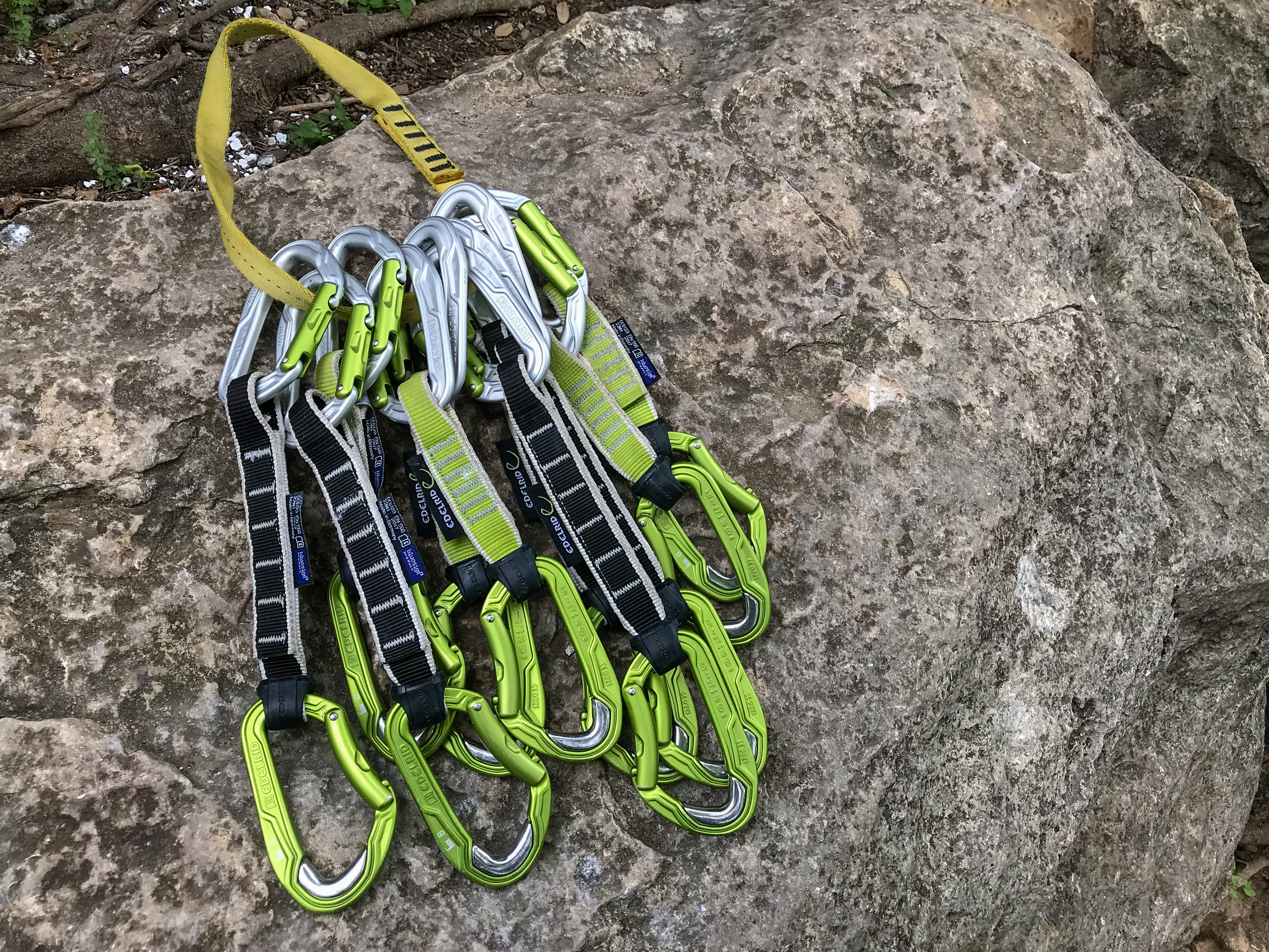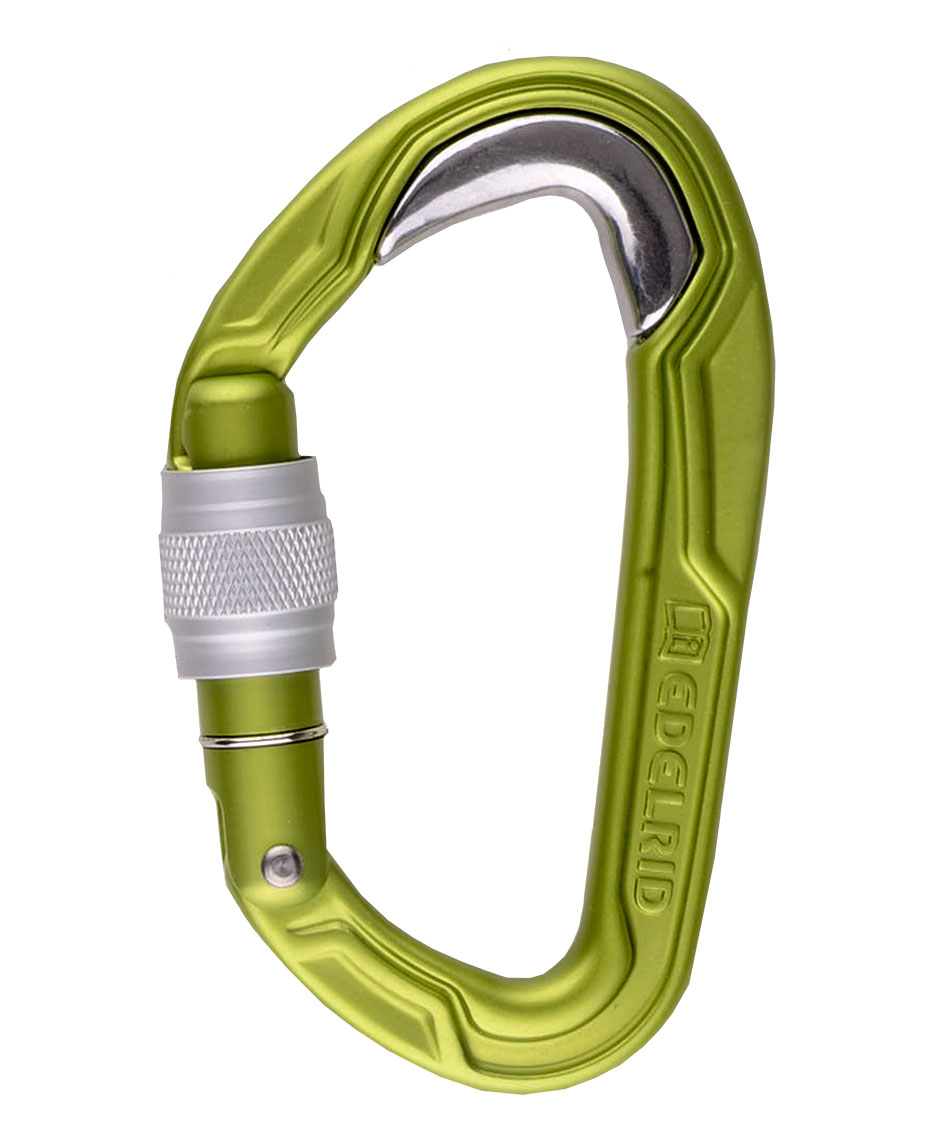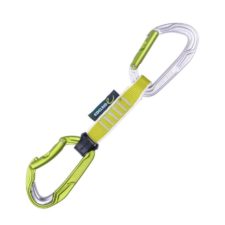

Over time, this added friction causes the rope to wear a groove through aluminum (and sometimes even steel) carabiners. This photo shows how the angle of the rope from the belay to the first quickdraw results in more friction than if the rope were able to run straight up. I will definitely be adding more Bulletproof carabiners to my rack. The rubber holding the rope-side carabiner in place is now dried and cracked, but otherwise it's almost impossible to discern the quickdraw from a brand new one.

There is almost zero wear on the steel sleeve where countless ropes ran over it, see-sawing back and forth against the metal, climber after climber, day after day. The Bulletproof quickdraw hung there four months, until the end of August.

It replaced an aluminum quickdraw that was already becoming significantly grooved. So here was the test: I hung a Bulletproof 'draw at the first bolt of Magnetar-one of the most popular (read: softest) 5.13ds in the canyon-in early May. Let us pray for the multitude of lost souls who may never see the light.the hot, white light that sears the pupils like a lamp over the operating table.) Anyone partaking in the hedonism of sport climbing should be obligated to lead above ice screws, tiny brass nuts and birdbeaks at least once. (*Apologies to any Alpinist readers who may be ruffled by this disgraceful image. More than once, I have hung regular aluminum quickdraws on a climb and returned a week or two later to find sharp-edged grooves worn into some of the carabiners, especially at the first bolt, where the angle of the rope from the belay to the cliff tends to create a lot of friction. It is common for climbers to hang and hoist themselves up on every bolt to dial in the moves of a particular route and then spend the remainder of the season attempting to redpoint it*. Derek FranzĮveryday from May through September, scads of Prana-clad sportsters swarm the canyon to dog their way up these challenging lines. The top locking carabiner was used for a tube-style belay/rappel device, resulting in the double grooves. I figured it would provide a good indicator of how the other versions of the Bulletproof carabiners might hold up because there are few krabs that see more abuse than those which dangle perpetually on Rifle's overhanging limestone routes. I tested the Bulletproof quickdraw at Rifle Mountain Park, a world-famous sport crag near my home in Colorado.

The result is a snap-link that is reasonably light, since it is mostly aluminum, and also very durable. Edelrid's solution with the Bulletproof design was to add a small steel sleeve over the main contact points of an aluminum carabiner. But steel is much, much heavier than aluminum. Steel carabiners have been used for these purposes in the past. Carabiners that are in frequent contact with a rope (often a dirty rope) running through them will eventually have a groove worn into the basket where the rope slides through it (two grooves if it's used for a tube-style belay/rappel device). Karissa FryeĪluminum-from which most carabiners are made-is light and strong, but it is also soft. The carabiner that the Bulletproof 'draw replaced was severely grooved. The Edelrid Bulletproof quickdraw is the first one clipped to the rope above the ground, near the lower right corner of the frame. Besides, there is also the consideration that Edelrid's Bulletproof carabiners have a wider application than the quickdraw I'm reviewing here the company also makes large, locking versions of the Bulletproof carabiners that can be used for belaying, rappelling or any other situations in which the carabiner will be subjected to heavy wear and tear.ĭerek Franz on Magnetar (5.13d), Rifle Mountain Park, Colorado. Well, you'd be hard-pressed to find a top-notch alpinist who doesn't put in training time on bolted routes. The Edelrid Bulletproof quickdraw- Wait! This review is for Alpinist, what the hell is this sport climbing equipment doing here?


 0 kommentar(er)
0 kommentar(er)
